Threatened and endangered species of the Everglades include:
- Plants

Everglades snail kite. Photo courtesy Robb Bennett, U.S. Geological Survey - American Alligator
- American Crocodile
- Sea Turtles
- Birds
- Florida Panther
- Manatee
Threatened wildlife includes species, subspecies, or isolated populations that are likely to become endangered in the near future unless steps are taken to protect and manage the species and/or its habitat for its survival. A species, subspecies, or isolated population is considered endangered that is, or soon may be, in immediate danger of extinction unless the species or its habitat is fully protected. Each species must be listed on the Federal list of endangered and threatened species before it can receive protection under the Endangered Species Act. The ESA was enacted in 1973 to conserve and set up recovery plans for listed species and associated habitats.
Plants
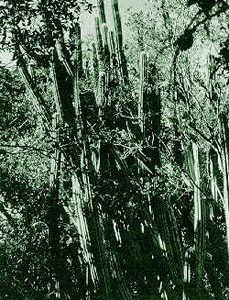
Threatened and endangered plantlife of the hardwood hammocks and rocky pinelands include the brittle thatch palm (Thrinax morrissii), buccaneer palm (Pseudophoenix sargentii), Florida thatch palm (Thrinax parvitolia), Krug’s holly (Ilex krugiana), lignum-vitae (Guaiacum sanctum), manchineel (Hippomane mancinella), silver thatch palm (Coccothrinax argentata), and tree cactus (Cereus robinii).
American alligator and American crocodile
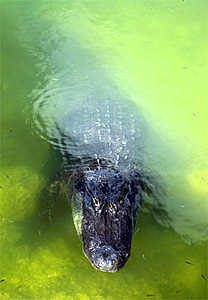
The American alligator (Alligator mississippiensis) is also found in the freshwater marshes of the Everglades. It was first listed as endangered in 1966 in accordance with the Endangered Species Act. However, populations quickly recovered resulting in delisting as an endangered species except for purposes of its similarity of appearance to the American crocodile (Crocodylus acutus) where the two species share habitat.
Sea Turtles
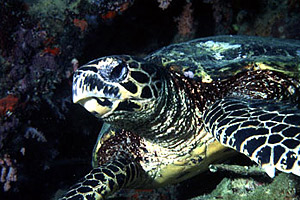
Marine and estuarine habitats of the Everglades provide habitat for threatened and endangered species. The Florida population of green sea turtles (Chelonia mydas) has been considered endangered since 1978. The declining population has been victim to commercial harvesting for eggs and food as well as incidental by-catch in the shrimp fishery. Hawksbill sea turtle (Eretmochelys imbricata), Atlantic Ridley sea turtle (Lepidochelys kempii), and leatherback sea turtle (Dermochelys coriacea) are all listed as endangered species while the loggerhead sea turtle (Caretta caretta) is considered threatened under the protection of the ESA. Recovery plans have been established for all listed sea turtle species.
Birds
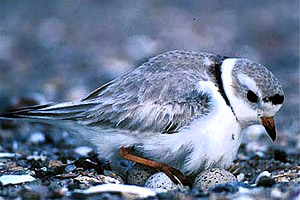
Many threatened and endangered species live throughout the Everglades. Threatened and endangered birds include the Everglades snail kite (Rostrhamus sociabilis), wood stork (Mycteria americana), Cape Sable seaside sparrow (Ammodramus maritimus mirabilis), red-cockaded woodpecker (Picoides borealis), piping plover (Charadrius melodus), bald eagle (Haliaeetus leucocephalus), and roseate tern (Sterna dougallii).
Manatee
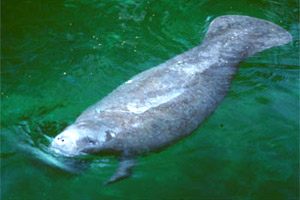
Federally listed as endangered, the manatee (Trichechus manatus laterostris) is a large, slow-moving, plant-eating aquatic mammal. Its distribution is determined primarily by water temperature as manatees cannot survive long in water below about 63 °F (17 °C). In Florida, manatees often migrate into warm spring-fed rivers or near the heated discharges of power plants during winter months. As offshore waters warm in late spring and summer, manatees move out into shallow fresh, brackish, and seawater habitats.
Florida Panther
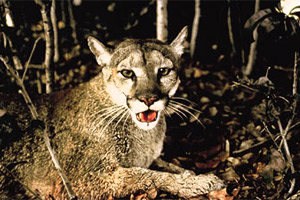
Primary threats to the Florida panther’s (Felis concolor coryi) survival are loss and degradation of habitat. An initial recovery plan is currently being implemented which identifies, protects, and enhances the existing range and habitats; establishes positive public opinion and support; and reintroduces panthers into areas of suitable habitat. It is estimated there are 70-100 individuals living in the hardwood hammocks of the Everglades.
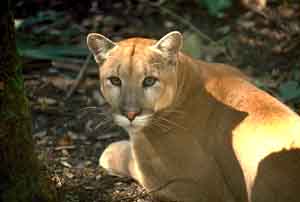
Special Highlight: Florida Panther
Order – Carnivora
Family – Felidae
Genus – Puma
Species – concolor coryi
Common Name
Florida panther
Geographical Distribution
Historically, the Florida Panther occurred throughout the southeast United States, from Texas, Louisiana, and the lower Mississippi River valley north and east to the Atlantic Ocean, including Arkansas, Alabama, Florida, Georgia, and parts of Tennessee and South Carolina. Today approximately 70 panthers remain in parks and nearby private lands in southwest Florida. The Florida panther is one of the most endangered animals in the world. The only known wild breeding population occurs in south Florida within the Big Cypress Swamp region. Radio telemetry has also tracked panthers into locations ranging from the St. Johns River drainage from Okeechobee county south to Putnam county.

Habitat
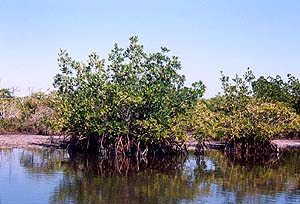
Florida panthers reside in upper dry lands such as hardwood hammock, pine flatwoods, saw palmetto and cabbage palm thickets, and in wetland areas including cypress forests, mangrove forests, and freshwater marshes. They often den and sleep in the drier scrub and saw palmetto environments. In search of food and safer resting locations, panthers are known to wade and swim through canals and swamps.
Preferring secluded habitats away from human activity, panthers rarely visit agricultural lands. They require large remote tracts of land with plenty of prey and cover along with low levels of human disturbance.
Home ranges of panthers in southwest Florida average 200 square miles for resident males and 75 square miles for resident females. These territories are maintained by each animal as hunting grounds. Males will not tolerate other males, and will fight, sometimes inflicting deadly wounds on the other. However, these territories tend to overlap with potential mates. They mark territories by leaving scat and urine on piles of dirt and leaves.
Social structure consists of mature resident animals who have territorial ranges, along with the transient and subdominant individuals who live on the peripheries. These panthers have suboptimal hunting grounds and an increased chance of human encounters.
Biology
Distinctive Features
This panther is smaller than its western cousins. It has longer legs, smaller feet, and a shorter coat. The Florida panther also often has a right angle crook between the second and third vertebrae from the end of its tail and a cowlick (whorl of hair) in the middle of its back. These two distinguishing features may be a result of inbreeding rather than defining characteristics of this subspecies.
The skull of the Florida panther differs from other subspecies of panther. It is characterized by an exaggerated rise of the nasal arch, giving the face a roman-nose appearance, as well as being relatively flat and broad overall. The paw prints are asymmetrical, consisting of a three lobed pad surrounded by four toes. During walking, the hind paw is often placed in the print of the front paw. The front paws are wider (~70mm) than the hind ones (~60mm) in adult animals
Coloration
The subspecies name concolor refers to the single, uniform body color of the Florida panther. Adults are tawny with lighter fur on the lower chests, belly, and inner legs. This tawny body coloration may vary considerably, ranging from grayish to reddish or yellowish. This uniform coloration camouflages panthers in a variety of environments. The tail tip, back of ears, and sides of the nose are dark brown or black. White spotting also occurs on the fur, possibly resulting from tick bites.
Size, Age & Growth
Adult male panthers in south Florida weigh up to 154 pounds (70 kg), measuring nearly 7 feet (2 m) from nose to tip of tail. Considerably smaller, females weigh between 50 and 108 pounds (23-49 kg) and measure about 6 feet (1.8 m) in length. The shoulder height ranges from 23-28 inches (60-70 cm). Panthers can live up to 12 years or more in wild populations. Kittens weigh between one and two pounds (0.5-1.0 kg) at the age of 12-14 days. They weigh from 33 to 66 pounds (15-30 kg) (males) and 33-49 pounds (15-22 kg) (females) by 10 months of age.
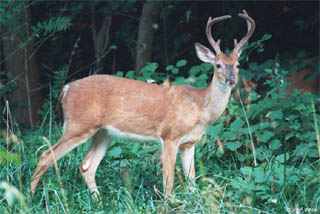
Food Habits
Panthers feed and travel during the cooler temperatures and low light levels of night. White-tail deer, feral hogs, raccoons, armadillos, small alligators, and other small rodents and fowl make up this strict carnivore’s diet. Deer or hogs are the preferred prey, taken once a week or so, supplemented with smaller prey. Being able to run up to 35 mph for only a short distance, the preferred method of hunting is to sneak up close to their prey to launch an ambush attack. Panthers kill prey with a strong bite to the throat, back of neck or base of skull.
Reproduction
The average breeding age is 2-3 years for both males and females, although they have been known to conceive as early as 18 months. The breeding season falls between October and March, with a gestation period of 92-96 days.
One litter is produced every other year, with an average litter size of 1-3 kittens. The female prepares the den in a dry, sheltered area, for protection from the harsh environmental elements. When the kittens are born, they have a spotted coat, blue eyes and are blind. The eyes open within 2-3 weeks, at the same time they begin to walk. During the first two months of life, the kittens are helpless and remain close to the den.
At approximately 6-8 weeks the kittens are weaned and introduced to meat. Eventually the kittens travel with their mother, learning hunting and survival skills. Around 6 months of age, the spotted markings begin to fade, with the coat becoming the tawny adult color and eyes turning from brown to pale gold. After a year and a half, the kittens will leave their mother in search of their own territories.
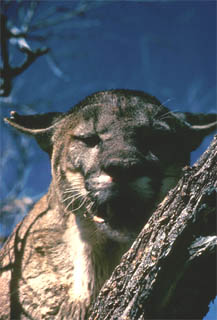
Death and Disease
There are many causes of death to Florida panthers including injuries from cat fighting, collisions with automobiles, illegal hunting, mercury poisoning, allergic reaction to anesthesia, and various diseases. The most frequent cause of death among radio-collared panthers was intraspecific aggression – panthers killing other panthers. Mature males often kill juvenile males who wander into their territories searching for a mate. Females have also been killed by mature males and occasionally a younger male will kill a mature male.
Deaths from motor vehicle collisions are responsible for a large number of deaths. Between 1978 and 1994, 20 panther deaths and 6 injuries were documented from these collisions. Diseases that inflict the Florida panther include pseudo rabies, a viral pathogen found in feral hogs. Its is fatal to hogs and believe to be transferred to panthers eating infected hogs. Panleukopenia (feline distemper) is highly contagious and potentially extremely dangerous to the entire remaining panther population. They are also susceptible to feline leukemia and feline AIDS virus.
Problems resulting from inbreeding exist such as abnormal semen, testicle abnormalities, and congenital heart disease. Panthers are also vulnerable to parasitic infestations of ticks, tapeworm, hookworm, ring worm, and intestinal flukes.
Management and Protection
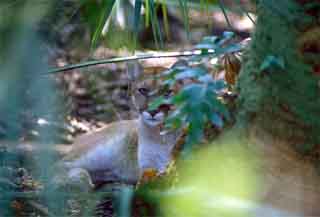
Threats to the Florida panther’s survival are loss and degradation of habitat. Other threats include inbreeding, insufficient prey numbers, motor vehicles, disease, and environmental contaminants. Experts all agree that something must be done immediately to preserve the remaining population.
An initial recovery plan was prepared by the Florida Panther Recovery Team, approved the Fish and Wildlife Service in 1981. It revised by the Florida Panther Interagency Committee’s Technical Committee and again approved in 1987 by the Fish and Wildlife Service. The objective is for three self-sustaining populations within the historic range of the Florida panther through: 1) Identifying, protecting, and enhancing the existing range and habitats, 2) Establishing positive public opinion and support and management of the panther, and 3) Reintroducing panthers into areas of suitable habitat.
This recovery plan is currently being implemented. In 1993, a Habitat Preservation Plan for panther habitat in south Florida was completed. This gives the framework for reintroduction site identification and evaluation projects. The primary force behind the recovery effort is the Florida Panther Interagency Committee. This committee was established in 1986 to ensure cooperation and coordination between the principal agencies involved in the implementation of recovery efforts. These agencies include U.S. Fish and Wildlife Service, National Park Service, Florida Fish and Wildlife Conservation Commission, and the Florida Department of Environmental Protection.
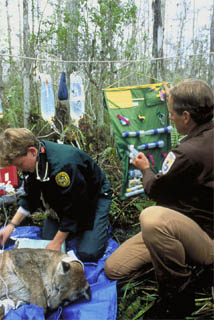
The Florida panther is listed as an endangered species and is protected under the Endangered Species Act of 1973. It is unlawful to import, export, transport, sell, receive, acquire, or purchase any wild animal (alive or dead including parts, products, eggs, or offspring): (1) in interstate or foreign commerce if taken, possessed, transported or sold in violation of any State law or regulation; or (2) if taken or possessed in violation of any U.S. law, treaty, or regulation or in violation of Indian tribal law. It is also unlawful to possess any wild animal (alive or dead including parts, products, eggs, and offspring) within the U.S. territorial or special maritime jurisdiction (as defined in 18 U.S.C. 7) that is taken, possessed, transported, or sold in violation of any State law or regulation, foreign law, or Indian tribal law. It is also listed on Appendix I of the Convention on International Trade in Endangered Species of Wild Fauna and Flora (CITES-I as of February 22, 1977); by the International Union for Conservation of Nature and Natural Resources (IUCN Red Data Book as of June, 1970); and the Convention on Nature Protection and Wildlife Preservation in the Western Hemisphere, 1970.
Taxonomy
Originally the Florida panther was classified in the genus Felis along with the domestic cat and 28 other species. It was first described by Bangs in 1899. The subspecies name coryi came from Charles B. Cory who first described this panther as one of the more than 20 subspecies of Puma concolor. He originally named it Felis concolor floridana, but floridana was already in use for a subspecies of bobcat. It was subsequently renamed Felis concolor coryi and in 1993, it was reassigned to the genus Puma.
Prepared by:
Cathleen Bester
For more information on the numerous threatened and endangered species in Florida, visit the Florida Fish and Wildlife Commission’s Imperiled Species List.